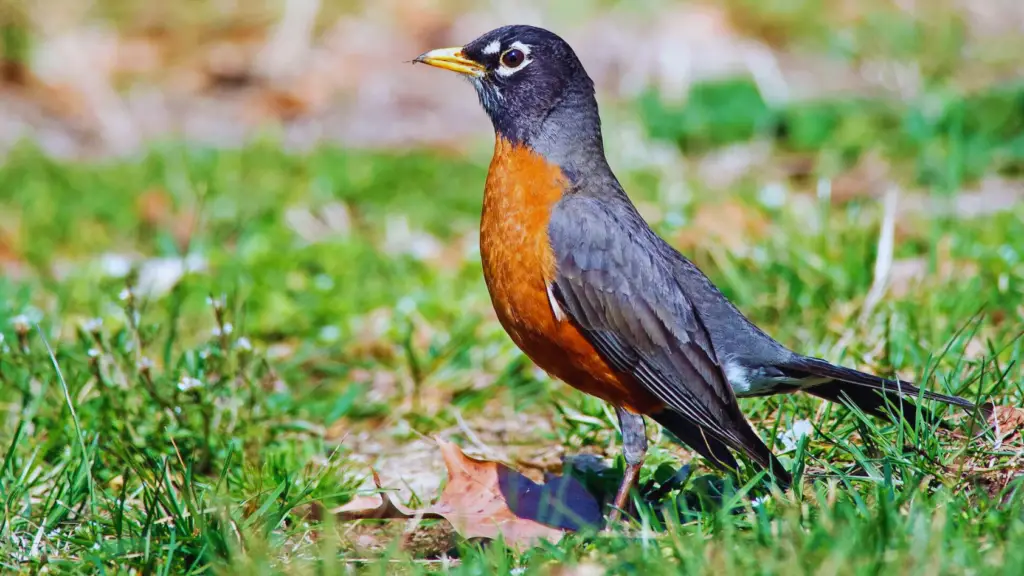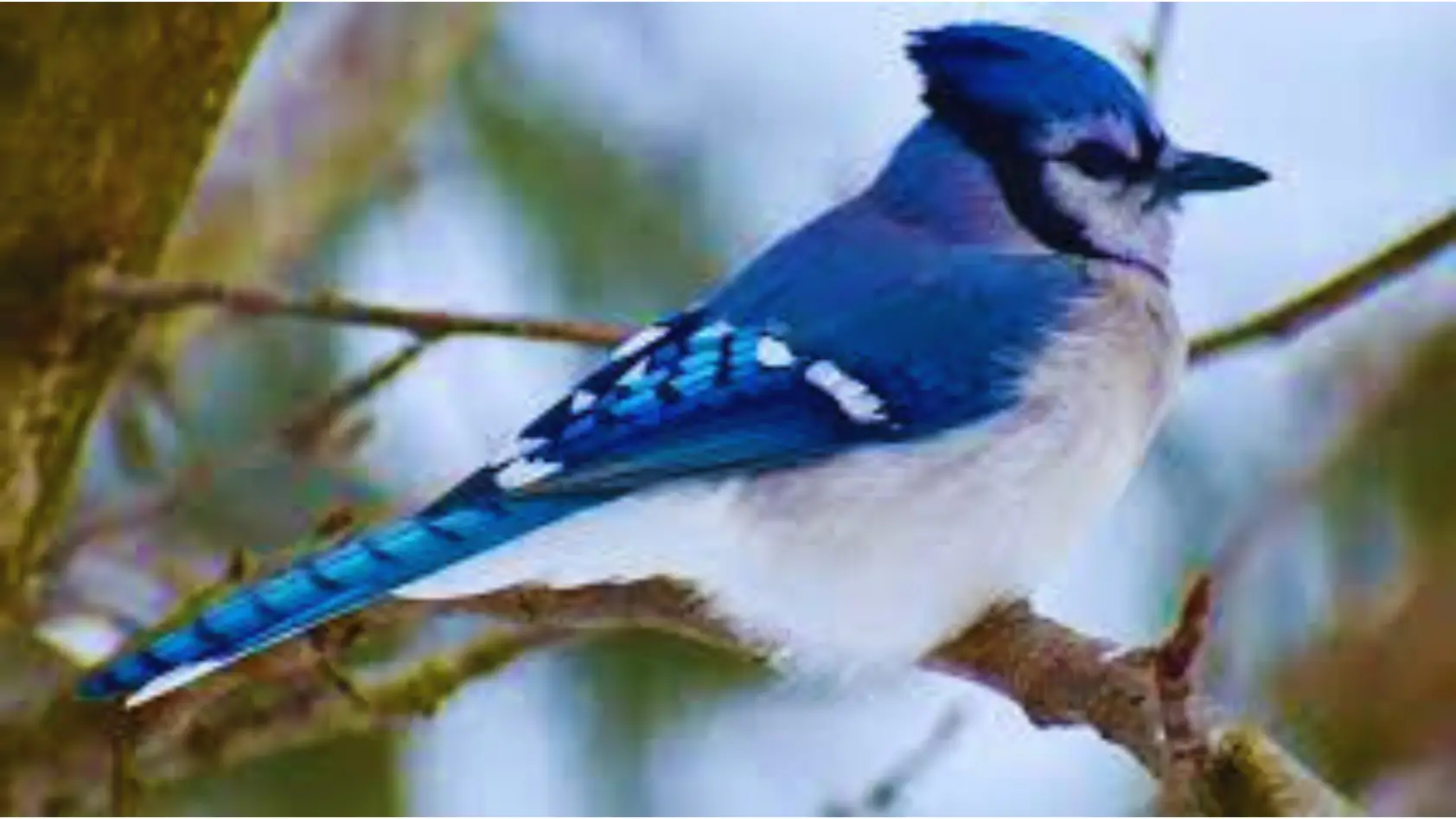Have you ever wondered what sound does a Blue Jay makes? The enchanting calls of the colorful bird are sure to enthrall you.
In this article, we will delve into the world of Blue Jay vocalizations, exploring their raucous calls, melodic songs, and the various ways they communicate with other Blue Jays.
These birds use their voices not only to defend their territory and attract mates but also as alarm calls in response to threats or predators. By understanding the role of vocalizations in Blue Jay social structure, we gain insight into their complex communication.
So, get ready to be amazed by the captivating calls of the Blue Jay, as we uncover the secrets behind their enchanting melodies and unique sounds.
Key Takeaways
- Blue Jays have a wide range of vocalizations, including raucous screams, melodic songs, and mimicry abilities.
- Vocalizations play a vital role in blue jay social structure, establishing dominance, communicating with mates and offspring, and warning of predators.
- Blue jay vocalizations serve survival purposes by startling and intimidating predators, mimicking sounds of other birds or animals, and coordinating attacks.
- The captivating calls of blue jays contribute to their charm and entertainment value, as well as their role in maintaining order within the group and reinforcing social hierarchies.
Overview of Blue Jay Vocalizations
Blue Jays are known for their captivating calls that will leave you in awe. These colorful avians have a wide range of vocalizations that are sure to catch your attention. From their raucous screams to their melodic songs, the Blue Jays have a diverse repertoire of sounds.
One of the most distinct calls of the Blue Jay is its loud and piercing scream. It is a harsh, high-pitched sound that can be heard from a distance. This call is often used to alert other birds of potential danger or to establish their territory. When you hear this scream, you can’t help but be amazed by its power and intensity.
In addition to their screams, Blue Jays are also skilled mimics. They can imitate the calls of other birds, such as hawks and crows, as well as various sounds in their environment. This ability allows them to communicate with other birds and deceive potential threats.
Blue Jays also have a softer side. They are capable of producing melodic songs that are composed of a series of whistling notes. These songs are often heard during courtship displays or as a means of communication within a flock.
Therefore, be ready to listen to a Blue Jay’s entrancing calls if you ever find yourself in its vicinity. Their vocalizations are truly a sight to behold and will leave you mesmerized by the beauty of nature.
The Raucous Calls of Blue Jays
Raucous calls from these vibrant birds can reach volumes of up to 100 decibels, rivaling the noise of a car horn. Blue jays are known for their loud and distinctive vocalizations, which they use to communicate with each other and establish their territory. These calls are not only loud but also quite varied, and they can mimic the sounds of other birds and even human voices. Here is a table showcasing some of the different calls and their meanings:
| Call | Meaning |
|---|---|
| “Jay! Jay!” | An alarm call, signaling danger |
| “Kleeek!” | A territorial call, asserting dominance |
| “Tweedle-deedle” | A courtship call, attracting a mate |
| “Chatter” | A social call, indicating group presence |
| “Whisper song” | A soft, low call used for close communication |
Listening to the blue jays’ raucous calls can be both captivating and amusing. Their ability to imitate other sounds adds to their charm, making them quite the colorful entertainers of the avian world. So, next time you hear a loud and unmistakable call, you’ll know it’s a blue jay making its presence known.
The Melodic Songs of Blue Jays
You’ll be delighted by the melodic songs of blue jays, as they serenade the world with their enchanting tunes. These beautiful birds have a remarkable ability to mimic the sounds of other birds, making their songs even more captivating. When you hear a blue jay’s song, you might think you’re listening to a choir of different bird species all at once.
Blue jays are known for their loud and raucous calls, but their songs are surprisingly melodious. They have a wide repertoire of musical phrases, ranging from soft and soothing notes to high-pitched and energetic melodies. Their songs are filled with trills, whistles, and warbles, creating a symphony that is truly mesmerizing.
Not only are blue jays talented singers, but they are also skilled improvisers. They often add their own unique twists and variations to their songs, making each performance a one-of-a-kind experience. You’ll never get tired of listening to their melodic tunes, as they constantly surprise you with their creativity.
So, the next time you find yourself in the presence of a blue jay, take a moment to listen to their enchanting songs. You’ll be transported to a world of beauty and harmony, as these colorful avians serenade you with their captivating melodies.
Communicating with Other Blue Jays
When you’re near a blue jay, it’s like being in a crowded room where everyone is talking at once, each voice vying for attention. These vibrant birds are highly social creatures and they use a wide range of calls to communicate with each other.
Here are four fascinating ways blue jays communicate:
- Alarm Calls: Blue jays are known for their loud and piercing alarm calls that warn other birds of potential danger. These calls are high-pitched and can be heard from a distance.
- Territorial Calls: Blue jays are fiercely protective of their territory and will use specific calls to assert their dominance and ward off intruders. These calls are often harsh and repetitive.
- Mating Calls: During the breeding season, male blue jays use complex songs to attract females. These songs are melodic and can vary in length and pitch. The females respond with soft calls to indicate their interest.
- Food Calls: When blue jays discover a food source, they emit a series of short, repetitive calls to alert other blue jays in the area. This behavior is known as ‘mobbing’ and it helps the birds locate and share valuable resources.
So next time you’re near a blue jay, take a moment to listen to the captivating calls of these colorful avians and appreciate the intricate ways they communicate with each other.
Defending Territory through Vocalizations

Protect your territory by asserting your dominance through powerful vocalizations. As a blue jay, your voice is your most potent weapon when it comes to defending your turf.
When intruders trespass into your domain, it’s time to let them know who’s in charge. You begin by emitting a series of loud, raucous calls that can be heard from a distance. These calls serve as a warning to any potential intruders, letting them know that they are encroaching on your territory.
Your voice is fierce and commanding, demanding respect from both friends and foes.
But it doesn’t stop there. Once the intruders are within sight, you unleash a barrage of aggressive calls that are impossible to ignore. Your voice pierces through the air, making it clear that you will not tolerate any threats to your territory. These vocalizations are not just for show; they serve a crucial purpose in establishing your dominance.
By asserting yourself through your powerful calls, you intimidate the intruders and make them think twice before challenging your authority.
Your vocalizations also serve as a means of communication with other blue jays in your area. When you hear the calls of other blue jays nearby, you respond with your own distinct vocalizations, letting them know that you are present and ready to defend your territory. This exchange of calls helps to establish a network of communication among blue jays, ensuring that everyone is aware of each other’s presence and boundaries.
In conclusion, defending your territory through vocalizations is a vital part of being a blue jay. Your powerful calls assert your dominance, intimidate intruders, and communicate with fellow blue jays. So, embrace your voice and let it be heard, for it is the key to protecting your turf and ensuring your dominance in the avian world.
Understanding the Meaning Behind Blue Jay Calls
Now that you understand how blue jays defend their territory through vocalizations, it’s time to delve into the fascinating world of understanding the meaning behind their calls.
When you listen to the calls of a blue jay, it’s like deciphering a secret code. Each call carries a specific message, serving as a way for blue jays to communicate with each other. Their vocalizations can convey a range of emotions, from warning other birds of potential danger to expressing their own territorial boundaries.
To truly appreciate the complexity of blue jay calls, let’s dive into the meaning behind some of their most common vocalizations. First, there’s the’screaming’ call, which is often used to alert other birds of a predator nearby.
Next, there’s the ‘whisper’ call, a softer and more subtle vocalization that blue jays use to communicate with their mate or offspring.
Blue jays have over 30 distinct calls in their repertoire. They can mimic the calls of other birds, fooling predators or tricking them into revealing their location.
Blue jays also have a unique call known as the ‘rusty gate’, which is thought to be used as a contact call between family members. Their calls can vary in pitch, duration, and intensity, allowing for a wide range of communication possibilities.
So, next time you hear the captivating calls of a blue jay, take a moment to appreciate the complexity and meaning behind their melodious messages.
Mimicking Other Birds and Sounds
Immerse yourself in the fascinating world of blue jays as they skillfully mimic the calls of other birds and create a symphony of sounds. These clever and resourceful birds have the amazing ability to imitate a wide range of sounds, including the songs of other bird species, as well as the sounds of animals and even human voices.
It’s truly remarkable how they can recreate the distinct calls of birds such as hawks, owls, and even the meowing of a cat.
The blue jay’s mimicry is not only impressive, but it also serves several important purposes. First and foremost, it helps them communicate with other birds. By mimicking the calls of their feathered neighbors, blue jays can send out warning signals of potential danger or alert others to the presence of food.
This mimicry also helps blue jays defend their territory, as they can imitate the calls of larger, more threatening birds to intimidate potential intruders.
But it’s not just other birds that blue jays can imitate. These clever mimics have been known to mimic the sounds of squirrels, chipmunks, and even the barking of dogs. Their ability to replicate such a wide array of sounds is truly astounding and adds to their already captivating repertoire.
So next time you hear a blue jay’s call, take a moment to listen closely. You might just be treated to a symphony of sounds as they show off their incredible mimicry skills.
Vocalizations during Courtship and Mating

During courtship, male blue jays serenade their potential mates with a melodious love song, their voices dancing like a spring breeze through the forest. The captivating calls of these colorful avians are a sight and sound to behold.
Here are four vocalizations that blue jays use to court and attract their mates:
- Whistling melodies: Male blue jays have a wide range of whistle-like calls that they use to serenade their potential mates. These melodic tunes can vary in pitch and rhythm, creating a symphony of sound that is sure to catch the attention of any female blue jay.
- Mimicking other birds: Blue jays are known for their ability to mimic the calls of other birds. During courtship, males may incorporate these mimicry skills to impress their potential mates. They can imitate the songs of other species, showcasing their vocal prowess and versatility.
- Soft warbles: In addition to their whistling melodies, male blue jays also produce soft warbles during courtship. These gentle, soothing sounds create a romantic ambiance and help to establish a connection between the male and female.
- Loud screeches: While the blue jay’s love song may be melodious, it can also be quite loud. Males often punctuate their serenades with loud screeches, adding a bold and powerful element to their courtship display.
So, next time you find yourself in the presence of blue jays during their courtship season, listen closely and be captivated by the enchanting sounds they use to woo their potential mates.
Vocalizations as Alarm Calls
One cannot help but be startled by the piercing alarm calls of the blue jay, a warning that echoes through the forest and sends a ripple of unease among its fellow creatures. When danger lurks, the blue jay becomes the vigilant guardian, sounding the alarm to alert its companions of impending threats. Its calls are sharp and shrill, demanding attention and instilling a sense of urgency in those who hear it. These vocalizations serve as a crucial survival mechanism for the blue jay, enabling it to communicate danger and rally its flock to take evasive action.
To understand the significance of the blue jay’s alarm calls, let’s take a closer look at a table that breaks down the different types of calls and their meanings:
| Call Type | Description | Meaning |
|---|---|---|
| “Jeer” | Harsh and repetitive call | Warning of potential predators |
| “Siren” | High-pitched and descending call | Signaling immediate danger |
| “Whistle” | Short and sharp call | Alerting flock members to be on high alert |
By utilizing these distinct alarm calls, the blue jay effectively communicates the nature of the threat, allowing other birds to respond accordingly. This ability to convey specific information through vocalizations is a testament to the blue jay’s intelligence and adaptability in the face of danger. So, the next time you hear the resounding alarm calls of a blue jay, take heed and appreciate the remarkable vocal abilities of this captivating avian.
Vocalizations in Response to Threats or Predators
Listen closely and let the alarm calls of the blue jay pierce through the forest like a siren, warning you of immediate danger and urging you to take evasive action. These captivating calls are not only mesmerizing but also serve a vital purpose in the bird’s survival. Here’s what you need to know about the vocalizations of blue jays in response to threats or predators:
- Shrill and piercing: When a blue jay detects a potential threat, it emits a series of loud, high-pitched calls that can be heard from quite a distance. These calls are designed to startle and intimidate predators, making them think twice before approaching.
- Vocal mimicry: Blue jays are skilled mimics, and they often imitate the sounds of other birds or animals to confuse predators. By mimicking the calls of hawks or other predators, blue jays create a false sense of danger, causing potential threats to retreat.
- Mobbing behavior: Blue jays are known for their strong sense of community and will often join forces with other birds to mob a predator. They use their vocalizations to coordinate their attacks, creating a chorus of warning calls that can be quite intimidating to any potential threat.
So next time you hear the distinctive calls of a blue jay, remember that they are not just beautiful melodies but a powerful defense mechanism, ensuring the safety and survival of these colorful avians.
The Role of Vocalizations in Blue Jay Social Structure

Now that you know how blue jays use their vocalizations to protect themselves from threats or predators, let’s dive into the fascinating role these calls play in their social structure.
You might be surprised to learn that blue jays, just like us humans, rely heavily on communication to establish and maintain social bonds.
In the world of blue jays, vocalizations serve as a form of social currency. These birds use a wide range of calls to convey different messages to their flock members. For example, they have specific calls to indicate the presence of food, alert others about potential dangers, or even to establish territory boundaries. These vocal exchanges are crucial in maintaining order within the group and ensuring everyone’s needs are met.
Blue jays are highly intelligent creatures, and their social structure is quite complex. Through their vocalizations, they are able to coordinate group activities, such as foraging for food or defending their territory. Their calls not only convey information but also help in bonding and reinforcing social hierarchies within the flock.
So, next time you hear the distinct calls of a blue jay, remember that they are not just making noise. They are engaging in a sophisticated form of communication that holds their social structure together.
What Sound Does A Blue Jay Make: Frequently Asked Questions
How do blue jays use their vocalizations to communicate with other bird species?
Blue jays use their vocalizations to communicate with other bird species by creating distinct calls and sounds. These help them establish territories, warn of danger, and coordinate group activities like finding food or defending against predators.
Do blue jays have different types of vocalizations for different types of threats?
Blue jays have an astonishing ability to communicate with different bird species. They have a range of vocalizations specifically tailored to different threats. It’s truly remarkable how they can adapt their calls to warn others.
Can blue jays mimic human speech or other non-bird sounds?
Yes, blue jays can mimic human speech and other non-bird sounds. They are known for imitating various sounds, including phone rings and barking dogs. It’s fascinating to hear their repertoire!
How do blue jays use their vocalizations during courtship and mating?
During courtship and mating, blue jays use their vocalizations to attract a mate and establish their territory. They serenade their potential partners with a variety of calls, showcasing their vocal prowess and charm.
What is the role of vocalizations in establishing and maintaining the social structure of a blue jay community?
Vocalizations are crucial for establishing and maintaining the social structure of a blue jay community. They help communicate dominance, territory boundaries, and warn of potential threats. Without vocalizations, the community’s cohesion and organization would be compromised.
Blue Jay Sounds: Conclusion
As you listen to the captivating calls of the blue jay, you can’t help but be transported to a vibrant woodland scene. The raucous calls pierce through the air, filling you with a sense of energy and excitement.
The melodic songs then serenade your ears, evoking a feeling of tranquility and wonder. This colorful avian not only communicates with its fellow blue jays, but also defends its territory with its vocal prowess.
In moments of courtship and mating, the blue jay’s vocalizations become a symphony of desire and passion. And when danger lurks, its alarm calls send shivers down your spine, urging you to take heed.
These vocalizations are not mere words, but a language of survival and social structure. The blue jay’s sound is a tapestry of emotions, weaving a spell of enchantment that leaves you yearning for more.













